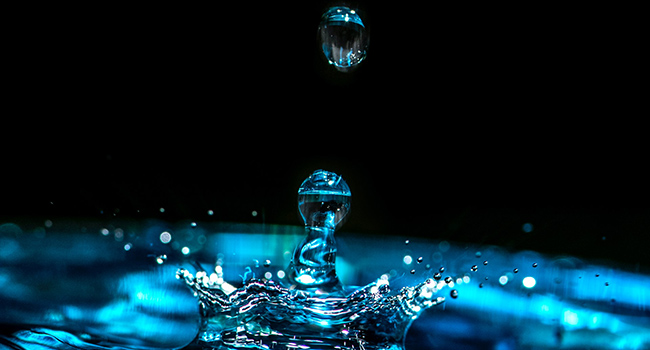A pilot project leveraging the University of Alberta’s artificial intelligence expertise to improve the process of making drinking water safe is up and running in Drayton Valley, Alta.
The U of A’s Reinforcement Learning and Artificial Intelligence Lab, along with the Alberta Machine Intelligence Institute, an Alberta not-for-profit institute with U of A affiliations, Edmonton infrastructure technology startup ISL Adapt and the Town of Drayton Valley, are partnering on the project to develop AI-driven improvements to better predict water treatment needs.
According to James Bell, a computing science research associate on the project, the general idea was to build a small-scale water treatment plant inside Drayton Valley’s existing water treatment plant to look at ways of optimizing the process.
“We want to apply some of the reinforcement learning the U of A is known for to this real-world problem of optimizing water treatment, reducing energy emissions and reducing chemical usage,” he said.
Bell explained the type of water treatment the town employs is called ultrafiltration, which uses membrane systems to remove particulates. Before filtering, chemicals are added to the input water in a pretreatment tank that cause the small particles to clump together or coagulate and settle out of the raw water. The clarified water is then pushed through a filter where smaller suspended solids and pathogens are filtered out.
However, the main problem with this type of process, he said, starts with the expensive membrane filters. And if the pretreatment chemicals are added in the wrong doses, or if they’re not matched to the types of contaminants in the raw river water, the filter can be clogged or fouled and damaged unnecessarily.
“You end up wasting energy doing backwash cleaning cycles more often, or money having to replace filtration cartridges entirely,” said Bell.
“Therefore the aim of this work is to optimize that process and get better at predicting what is coming in on the input side from the North Saskatchewan River.”
That’s where reinforcement learning comes in. Bell said it is different from standard machine learning, where data is provided and the system learns to predict an outcome.
Reinforcement learning, on the other hand, is learning to optimize toward a reward—even learning to forgo small rewards in the short term for a bigger one down the road. He pointed to the U of A graduates with DeepMind, a leading AI research company, who used reinforcement learning to beat the world’s best at the game of Go.
As an example, Bell said often water treatment facilities are run ragged in the spring as chemicals are added to raw water that is particularly dirty because of spring runoff. The resulting water is safe after all the treatment steps and final chlorination, but often leaves tap water tasting less than desirable.
“We think that AI will be better able to predict some of these seasonal changes and figure out precise amounts of chemical to use to reduce fouling,” he said.
Less energy and fewer chemicals are not only an environmental win but also a fiscal one, Bell noted, adding that reinforcement learning may also allow municipalities and their partners to create a one-size-fits-all facility that learns the individual needs of the environment as it goes, rather than running through the expense of optimizing for each specific river source at the onset. The energy used to treat water is a major cost for municipalities and ultimately is connected to the grid, where reducing emissions is an important provincial goal.
“Lowering the price for treated water is important, especially when you have communities – especially northern Indigenous communities – that don’t have safe drinking water,” he said. “If we can help bring the costs down, we can tackle that challenge and make it easier to deploy these systems.”
Bell said the idea for the project – led by Martha White, associate professor in the Faculty of Science and Canada CIFAR AI Chair at Amii – has been in the works for a couple of years, since ISL Adapt began work on an upgrade for Drayton Valley’s water. To help, U of A researchers added a host of sensors to the pilot system that normal plants don’t have, which are now collecting a wide range of data.
Because they have a good relationship with the municipality of Drayton Valley, Jason Kopan, ISL Adapt’s lead water infrastructure engineer, said the town was very happy to support the research.
“We are really excited to demonstrate the possibilities of reinforcement learning in the domain of water treatment processes and industrial control,” said Kopan.
“This is the first step in developing AI-driven water treatment systems that can shift the paradigm of water treatment in Alberta and beyond.”
| By Michael Brown
This article was submitted by the University of Alberta’s online publication Folio, a Troy Media content provider partner.
The views, opinions and positions expressed by columnists and contributors are the author’s alone. They do not inherently or expressly reflect the views, opinions and/or positions of our publication.



